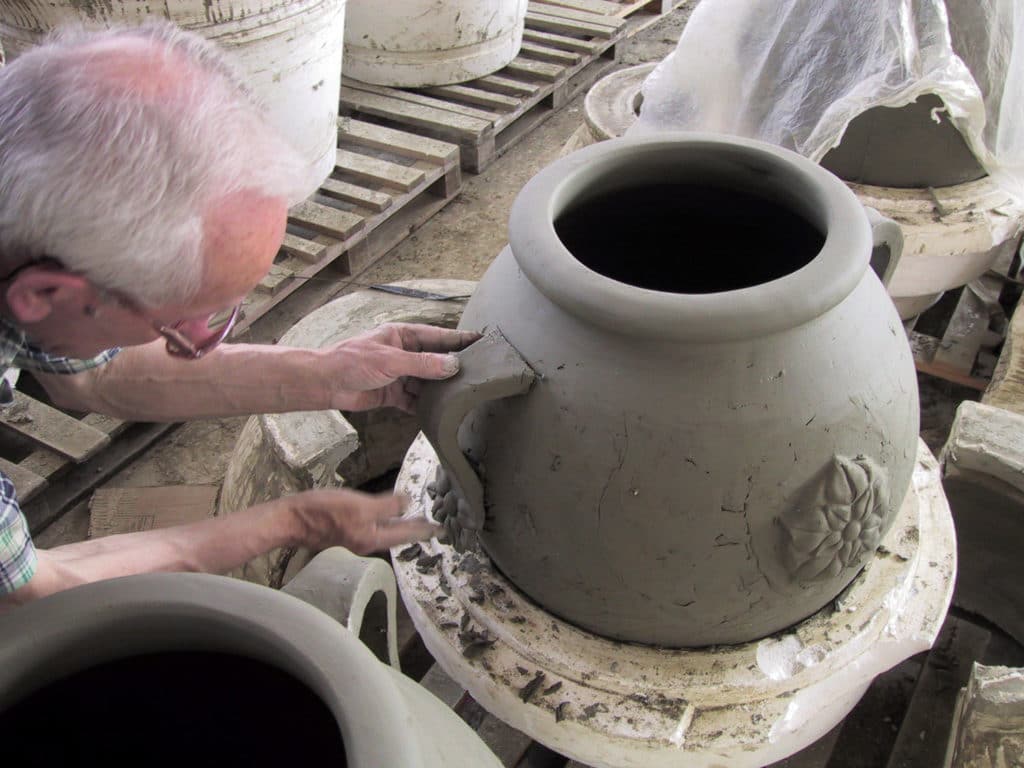Inside the Pieces: Why We Love Authentic Pottery
Baked Earth series with Scott Semple
Hello to all and nice to be here again. It’s a classic Fall morning here on the Central Coast. I am currently walking around the Eye of the Day showroom, sipping Mint tea, trying to keep Shorty the dog at bay and writing to an enthusiastic yet invisible audience about my favorite messy, muddy medium: clay.
So, I’ve been thinking about this word “authentic.”
The first time I stepped foot into this showroom, I’m pretty sure what came out of my mouth was, “Wow, finally, authentic pieces.” I feel blessed to have traveled a good part of the world. I have not only seen, but intentionally sought out traditional pottery in villages from the foothills of Guatemala to Pokhara Nepal, from the backside of Cuba, to the historic potteries of Crete and mainland Greece. Knowing a thing or two about pottery and what it takes to build large format ceramic vessels, I walk in to Eye of the Day and immediately I’m transported to the smell of Turkish coffee in the Mediterranean, or the intense glow of a Native American dung firing.
This showroom is the gathering place of authenticity. You can look down inside these big pots and see what it took to make them, the marks that the sponge leaves while it spins on the wheel, the throw lines, and where sections of the piece were connected and not only joined, but adorned. The Greek ware in particular is notorious for actually celebrating the area on a vessel, like this one, where sections of spun clay were joined together to make a much larger form. I can see handles on pots that at first glance seem just like handles but are actually an integral part of how the artist moves the piece from the kiln to the customer. Or all these pots that have tool marks inside them from popping the occasional, yet inevitable air bubble. It’s all there, inside the pieces.

I’m talking about form—the mark of what it took to create the form, the container, not the decoration or the way the fire has licked it here or there on the surface. I tell my students almost daily, there is a form and there is a surface. Learn to treat each as a separate component, and you will be successful in clay. The form by itself should stand up to serious critique.
The work for sale at Eye of the Day is authentic. Not overly decorated or gaudy, not borrowed to look like it’s from some other culture. It is Authentic Classicism, coming from some of the few places in the world that are still producing wares that are handmade, timeless classical forms. We end up longing for these pieces, like touchstones from a place and time in history.
My last stop on the showroom tour has brought me to the Italian terracotta. Eye of the Day has the largest collection of authentic Italian terracotta containers from Terrecotte San Rocco in the entire country. There is so much handmade information in these vessels, I could talk and talk about it (as you probably guessed). But for now, I promise to revisit this topic of Italian Terrecotte San Rocco. How it is built, where the clay comes from, why it is frost resistant and more.
But until then, get to know what is inside a vessel, not just its outer reveal.
See you next month!






Leave a Reply